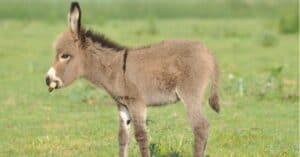Weasels vs Ferrets: 5 Key Differences Explained
@media (min-width: 481px) {
.mobile-top-content {
display: none;
}
}
#mobileTopContentCTACarouselControls { overflow: hidden; text-overflow: ellipsis; white-space: nowrap; }
.mobile-top-content .more { color: #fff; }
.mobile-top-content a { color: #fff; text-decoration: underline; }
.mobile-top-content a:hover { color: #fff; text-decoration: underline; }
@media (max-width: 480px) {
.mobile-top-content {
background-color: #06a10b;
color: #fff;
text-align: center;
/*height: 60px;
padding-top:5px;*/
font-size:80%;
/* display: block; */
margin: 0px -30px;
}
}
Weasels and ferrets are both small, carnivorous mammals that are characterized by an elongated body and a pointed snout. Both animals also often have white markings on them that can make them appear quite similar. In fact, considering their appearance, they can often be confused. However, there are some key differences that make it easy to tell which is which.
Although they both can have white markings, their actual body colors are different. Also, one is much bigger than the other but the shorter one actually has the longer tail! But that’s not all, as they’re active during different times of the day and have very different temperaments and social structures. So why not join us as we discover and explain all of the key differences between weasels and ferrets!
Comparing Ferret vs Weasel
Of the 21 species in the Mustelinae subfamily, eleven of them are weasels, two are ferrets, and the rest are polecats, mink, and ermines. Ferrets are often kept as pets and have been domesticated for thousands of years and these are known as Mustela furo. However, although most are domesticated there are still some wild ferrets, particularly the black-footed ferret (Mustela nigripes) which lives in North America and is an endangered species.
At first glance weasels and ferrets appear to be very similar, but the deeper we look the more we find they are both completely unique in their own right. Check out the chart below to learn a few of the main differences.
| Ferret | Weasel | |
| Size | 8 to 20 inches | 10 to 12 inches |
| Location | North America, North Africa, Europe | North America, South America, Asia, Europe, North Africa |
| Habitat | Grasslands | Woodland, marshes, moors, grasslands, urban areas |
| Color | Black / dark brown, sometimes with cream markings | Light brown / tan with white underside |
| Nocturnal vs Diurnal | Nocturnal / crepuscular | Diurnal |
| Social Structure | Live in groups | Solitary |
| Domesticated | Yes | No |
| Diet | Mice, rats, rabbits, birds, prairie dogs | Rats, mice, voles, rabbits, birds, bird eggs |
| Predators | Coyotes, badgers, bobcats, foxes, owls, eagles, hawks | Foxes, birds of prey such as owls and hawks |
| Lifespan | 5 to 10 years | 4 to 6 years |
The 5 Keys Differences Between Weasels and Ferrets
The key differences between ferrets and weasels are that ferrets are generally longer than weasels. In addition, ferrets live in grasslands while weasels live in much more diverse habitats that include marshes and are also successful in urban environments. Finally, ferrets have a darker coloration and are nocturnal while weasels are active during the day. Let’s dive into these differences in more detail!
Weasel vs Ferret: Size

One of the most significant differences between weasels and ferrets is their size. Ferrets are generally much longer than weasels and range from 8 to 20 inches long nose to tail. Weasels are much smaller and usually only reach 10 to 12 inches.
However, there are a few more differences between them in the size department. Although both animals have a similar body which is tubular-shaped, ferrets are much thinner than weasels. Additionally, weasels have much longer tails than ferrets. Ferrets have a fairly short tail that is usually around 5 inches long, but weasels have a tail that is almost as long as their body.
Weasel vs Ferret: Habitat
Weasels are highly adaptable animals and can live in a variety of different places. However, they prefer to live in woodlands, marshland, moors, grassland, and are even found in urban areas. On the other hand, although most ferrets are domesticated, in the wild they prefer to live in grasslands. Wild ferrets live in tunnels that have usually been dug by other animals as they themselves are not the best diggers. They actually often live in tunnels that have been made by prairie dogs, which are on the menu for ferrets.
Weasel vs Ferret: Color
Easily the most noticeable difference between weasels and ferrets is the difference in their appearance. Ferrets are usually dark brown or black and sometimes have mixed cream markings on them. Weasels are a much lighter color and are light brown or tan with a white underbelly.
Weasel vs Ferret: Nocturnal or Diurnal
Another major difference between these two small mammals is their sleeping habits. Ferrets and weasels are active at completely different times of day. Weasels are diurnal and are active and hunting during daylight hours and sleep during the night. Instead, ferrets are the complete opposite and are mostly nocturnal, whereby they sleep during the day and are most active during the night. However, sometimes ferrets can also lean more towards crepuscular behavior which is when they are most active during the twilight hours of dawn and dusk.
Weasel vs Ferret: Domestication

jurra8/Shutterstock.com
Weasels and ferrets even have completely different natures, as is seen by the domestication of ferrets. Although there are some wild ferrets, and some domesticated ferrets that have escaped to live in the wild, most ferrets are domesticated and have been for centuries. Ferrets were first domesticated around 2,500 years ago, likely by ancient Greeks to hunt vermin. Ferrets are extremely intelligent and have a playful and mischievous nature and nowadays are kept as pets in many countries. However, they are also still widely used to hunt vermin even now.
In a complete contrast to ferrets, weasels are always described as wild animals and are not domesticated or kept as pets. Weasels are vicious and aggressive hunters and are bold enough and strong enough to attack prey that is much larger than they are.
FAQ’s (Frequently Asked Questions)
Are weasels and ferrets from the same family group?
Yes, weasels and ferrets are both from the family group Mustelidae which is the largest family in the order Carnivora and includes badgers, otters, mink, polecats, stoats, and wolverines amongst others. Weasels and ferrets are also from the same subfamily – Mustelinae – which includes weasels, ferrets, and mink.
How do weasels kill their prey?
Just like big cats, weasels kill their prey with one swift and aggressive bite to the back of the neck or the base of the skull which is usually immediately fatal. Much like foxes, when food is plentiful weasels kill more than they need and store the leftovers in a cache in the ground.
Are ferrets polecats?
It is generally agreed that European polecats are the wild ancestors of domesticated ferrets. Ferrets are believed to have been bred from polecats more than 2,000 years ago for the purpose of hunting rodents such as rats and mice.
Why do weasels “war dance”?
The weasel war dance is a form of behavior where weasels dance around doing a series of excited hops sideways and backward, often with an arched back and accompanied by a series of “clucking” noises. This war dance is commonly used to disorientate and confuse prey before they attack. Ferrets also sometimes engage in the same behavior, but in domesticated ferrets, it is usually during play after which they “capture” toys or other objects.
More from A-Z Animals
.more-snake-card-image { max-height:140px !important; }
@media (min-width: 481px) {
.mobile-top-content {
display: none;
}
}
#mobileTopContentCTACarouselControls { overflow: hidden; text-overflow: ellipsis; white-space: nowrap; }
.mobile-top-content .more { color: #fff; }
.mobile-top-content a { color: #fff; text-decoration: underline; }
.mobile-top-content a:hover { color: #fff; text-decoration: underline; }
@media (max-width: 480px) {
.mobile-top-content {
background-color: #06a10b;
color: #fff;
text-align: center;
/*height: 60px;
padding-top:5px;*/
font-size:80%;
/* display: block; */
margin: 0px -30px;
}
}
Weasels and ferrets are both small, carnivorous mammals that are characterized by an elongated body and a pointed snout. Both animals also often have white markings on them that can make them appear quite similar. In fact, considering their appearance, they can often be confused. However, there are some key differences that make it easy to tell which is which.
Although they both can have white markings, their actual body colors are different. Also, one is much bigger than the other but the shorter one actually has the longer tail! But that’s not all, as they’re active during different times of the day and have very different temperaments and social structures. So why not join us as we discover and explain all of the key differences between weasels and ferrets!
Comparing Ferret vs Weasel
Of the 21 species in the Mustelinae subfamily, eleven of them are weasels, two are ferrets, and the rest are polecats, mink, and ermines. Ferrets are often kept as pets and have been domesticated for thousands of years and these are known as Mustela furo. However, although most are domesticated there are still some wild ferrets, particularly the black-footed ferret (Mustela nigripes) which lives in North America and is an endangered species.
At first glance weasels and ferrets appear to be very similar, but the deeper we look the more we find they are both completely unique in their own right. Check out the chart below to learn a few of the main differences.
| Ferret | Weasel | |
| Size | 8 to 20 inches | 10 to 12 inches |
| Location | North America, North Africa, Europe | North America, South America, Asia, Europe, North Africa |
| Habitat | Grasslands | Woodland, marshes, moors, grasslands, urban areas |
| Color | Black / dark brown, sometimes with cream markings | Light brown / tan with white underside |
| Nocturnal vs Diurnal | Nocturnal / crepuscular | Diurnal |
| Social Structure | Live in groups | Solitary |
| Domesticated | Yes | No |
| Diet | Mice, rats, rabbits, birds, prairie dogs | Rats, mice, voles, rabbits, birds, bird eggs |
| Predators | Coyotes, badgers, bobcats, foxes, owls, eagles, hawks | Foxes, birds of prey such as owls and hawks |
| Lifespan | 5 to 10 years | 4 to 6 years |
The 5 Keys Differences Between Weasels and Ferrets
The key differences between ferrets and weasels are that ferrets are generally longer than weasels. In addition, ferrets live in grasslands while weasels live in much more diverse habitats that include marshes and are also successful in urban environments. Finally, ferrets have a darker coloration and are nocturnal while weasels are active during the day. Let’s dive into these differences in more detail!
Weasel vs Ferret: Size

One of the most significant differences between weasels and ferrets is their size. Ferrets are generally much longer than weasels and range from 8 to 20 inches long nose to tail. Weasels are much smaller and usually only reach 10 to 12 inches.
However, there are a few more differences between them in the size department. Although both animals have a similar body which is tubular-shaped, ferrets are much thinner than weasels. Additionally, weasels have much longer tails than ferrets. Ferrets have a fairly short tail that is usually around 5 inches long, but weasels have a tail that is almost as long as their body.
Weasel vs Ferret: Habitat
Weasels are highly adaptable animals and can live in a variety of different places. However, they prefer to live in woodlands, marshland, moors, grassland, and are even found in urban areas. On the other hand, although most ferrets are domesticated, in the wild they prefer to live in grasslands. Wild ferrets live in tunnels that have usually been dug by other animals as they themselves are not the best diggers. They actually often live in tunnels that have been made by prairie dogs, which are on the menu for ferrets.
Weasel vs Ferret: Color
Easily the most noticeable difference between weasels and ferrets is the difference in their appearance. Ferrets are usually dark brown or black and sometimes have mixed cream markings on them. Weasels are a much lighter color and are light brown or tan with a white underbelly.
Weasel vs Ferret: Nocturnal or Diurnal
Another major difference between these two small mammals is their sleeping habits. Ferrets and weasels are active at completely different times of day. Weasels are diurnal and are active and hunting during daylight hours and sleep during the night. Instead, ferrets are the complete opposite and are mostly nocturnal, whereby they sleep during the day and are most active during the night. However, sometimes ferrets can also lean more towards crepuscular behavior which is when they are most active during the twilight hours of dawn and dusk.
Weasel vs Ferret: Domestication

jurra8/Shutterstock.com
Weasels and ferrets even have completely different natures, as is seen by the domestication of ferrets. Although there are some wild ferrets, and some domesticated ferrets that have escaped to live in the wild, most ferrets are domesticated and have been for centuries. Ferrets were first domesticated around 2,500 years ago, likely by ancient Greeks to hunt vermin. Ferrets are extremely intelligent and have a playful and mischievous nature and nowadays are kept as pets in many countries. However, they are also still widely used to hunt vermin even now.
In a complete contrast to ferrets, weasels are always described as wild animals and are not domesticated or kept as pets. Weasels are vicious and aggressive hunters and are bold enough and strong enough to attack prey that is much larger than they are.
FAQ’s (Frequently Asked Questions)
Are weasels and ferrets from the same family group?
Yes, weasels and ferrets are both from the family group Mustelidae which is the largest family in the order Carnivora and includes badgers, otters, mink, polecats, stoats, and wolverines amongst others. Weasels and ferrets are also from the same subfamily – Mustelinae – which includes weasels, ferrets, and mink.
How do weasels kill their prey?
Just like big cats, weasels kill their prey with one swift and aggressive bite to the back of the neck or the base of the skull which is usually immediately fatal. Much like foxes, when food is plentiful weasels kill more than they need and store the leftovers in a cache in the ground.
Are ferrets polecats?
It is generally agreed that European polecats are the wild ancestors of domesticated ferrets. Ferrets are believed to have been bred from polecats more than 2,000 years ago for the purpose of hunting rodents such as rats and mice.
Why do weasels “war dance”?
The weasel war dance is a form of behavior where weasels dance around doing a series of excited hops sideways and backward, often with an arched back and accompanied by a series of “clucking” noises. This war dance is commonly used to disorientate and confuse prey before they attack. Ferrets also sometimes engage in the same behavior, but in domesticated ferrets, it is usually during play after which they “capture” toys or other objects.









